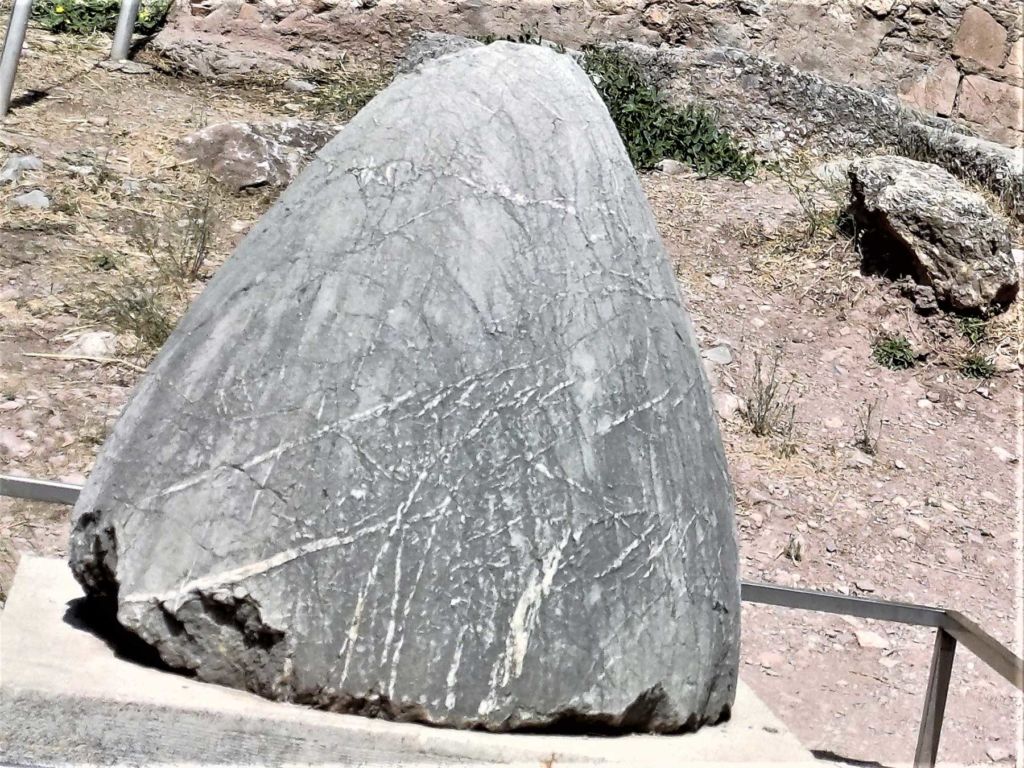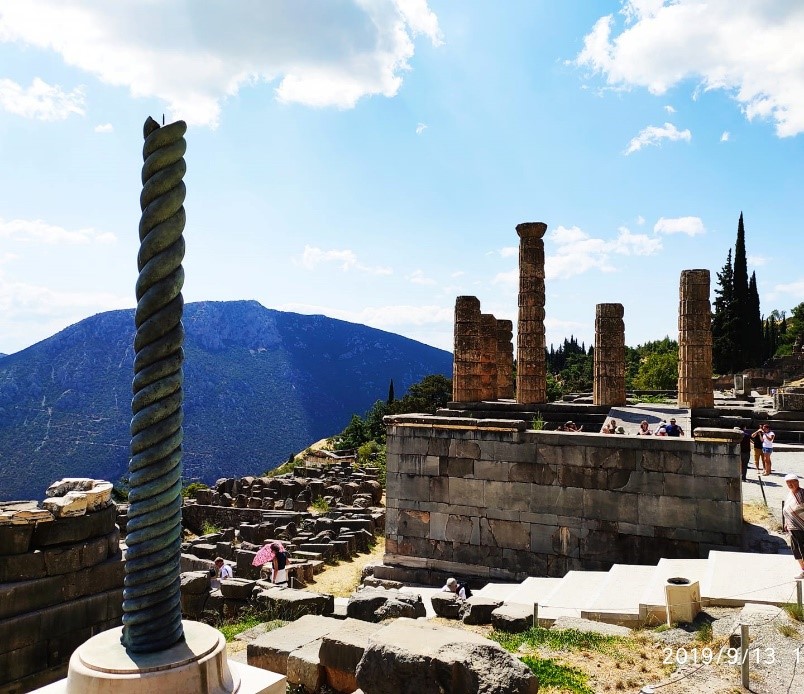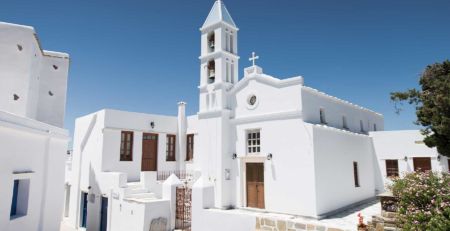The Legend and Reality of Delphi, Greece
Delphi is an ancient town, a UNESCO World Heritage site lying on the slopes of Mount Parnassus above the Gulf of Corinth, which is located at the upper central Greece. It’s one of the most sought- after historic sites in Greece, well known as the sanctuary of Apollo and the shrine of his oracle. The archeological site of Delphi includes two sanctuaries, dedicated to Apollo and Athena, along with other buildings, mostly intended for sports. When visitors arrives from Athens, they first see the sanctuary of Athena Pronaia, and then move on to the temple of Apollo.
History of Delphi
In prehistory and in the myths of the ancient Greeks, the site was sacred to Mother Earth, and believed to be guarded by the terrible serpent Python who was guarding the navel of the world. In fact, Python is claimed by many to be the original name of the site in recognition of the Python which Apollo defeated. Some also believe that the ancient name of the site had been Krisa, while others relate the name to Pytho and the Pythia (the priestess serving as the oracle). According to the Homeric hymn to the Pythian Apollo, it is believed that Apollo as an infant shot an arrow which hit the serpent Python, the son of Gaia, because of which Apollo was forced to fly and spend 8 years in menial service before he was forgiven.
Essence of Delphi
The name Delphi comes from the word “delphys” which means womb and has indications to the archaic veneration of Gaia at the site. It is believed that in the beginning Apollo came to Delphi in the form of a dolphin, carrying the Cretan priests on his back. The Homeric name of the oracle is Pytho. Another belief around the area is that Apollo came walking from the north and stopped at Tempe, to pick laurel (Bay Tree) which he considered to be a sacred plant. In celebration of this legend, the winners of the Pythian Games received a wreath of laurel picked in the temple. Delphi became the site of a major temple to Apollo, as well as the Pythian Games and the prehistoric Oracle.
Why is it famous – The Site is famous for four main reasons
- The Oracle of Delphi
- The Pythian Games
- The Temple of Apollo
- The Omphalos (The Navel)
The theory behind the Oracle of Delphi
The ancient sanctuary that grew rich as the seat of Pythia, the Oracle who was consulted about important decisions throughout the ancient classical world. The ancient Greeks considered the centre of the world to be in Delphi, marked by the stone monument known as the Omphalos. Delphi is recognised by UNESCO as a World Heritage site, as it had phenomenal influence in the ancient world.
Delphi is best known for its Oracle. The Oracle was a means through which worshipers would hear the words of God Apollo, spoken through a priestess (Pythia). The ritual was carried out by paying a levy of Greek pelanos and a goat to be sacrificed at the altar. A male priest would put the question to the Pythia, who would answer in a trance, a state that is believed to be induced by the hallucinogenic vapours emanating from the crack at the centre of the world, over which she sat on a tripod, while chewing laurel leaves. The incantations were interpreted by the priest and were almost always ambiguous.
Alexander and Delphi Legends, have it that Alexander the Great went to the Oracle of Delphi before moving with his army to invade Persia. When Alexander went to visit the Oracle, it was closed during the cold months from Nov to Feb as it is believed that the vapours emanating from the crack of the centre of the earth weren’t strong enough in cold weather.
Alexander who was told to come back when the Oracle was open, pleaded with the guards but they wouldn’t let him go inside. He then forced his way into the temple, grabbed the Pythia by the hair and dragged her towards the sacred alter, demanding a prophecy. The Pythia cried in outrage “you are invincible” which she probably meant as you are an insufferable little brat! But he took it as “you’ll not be stopped in battle!”
He released her, and went on to announce to his men that the Pythia said he could not be defeated.
Even in the ancient world, some folks just never took “no” for an answer… 😉
The Architecture of Delphi
Sacred way
It is the main route through the sanctuary of Apollo, which is a gateway uphill 200 meters to the Temple of Apollo. In the olden days it was lined with votive monuments and treasuries erected by various Greek cities, reflecting the diversity of the political pattern of ancient Greece. The monuments have now disappeared, but many of their bases have survived.
The Omphalos

The Omphalos Delphi is known as the navel of the World by the Ancient Greeks. According to Mythology, Zeus sent out two eagles from two ends of the universe to find the navel of the world. The eagles met at Delphi and Zeus threw a stone from the heavens to mark the spot. The stone can be seen at the site to this date. Delphi is set within a very beautiful landscape, and for many centuries has been the cultural and religious center and symbol of the unity of the Hellenic world.
Altar of Apollo

The Temple of Apollo, of which now only the foundations survive, is the most important building in the Sanctuary of Apollo. The temple was built three times at the same location, which featured columns, sculptures, and statues. The Apollo temple that is presently seen in Delphi was built in Doric style during the 4th century BC, which preserved the ground plan of the earlier 6th century BC Archaic Temple… They even re-used the old column drums, though the detailing on the columns are said to be of the late-classical period.
The Tripod of the Plataeans
This was the sole common votive by all the Greeks at the Delphic sanctuary following their victory over the Persians in the battle of Plataea in 479 B.C. The Greeks, after gathering the spoils of victory, kept one-tenth and used this to cover the cost of dedicating to Apollo a gold tripod supported on a bronze column 7.5 m. tall in the form of a three-bodied serpent. The Phocians melted down the gold from the tripod during the third Sacred War (354-343 B.C), and Constantine the Great transferred the serpentine column to Constantinople when it was founded in 330 A.D. and set it up in the Hippodrome, where it still stands. Behind the tripod of the Plataeans are preserved the foundations of a large plinth that supported the gilded chariot of the Sun God (llios), patron of the island of Rhodes, which was a late 4th century B.C. votive by the Rhodians.
The polygonal wall
The famous polygonal wall is a well-retained wall of the Temple of Apollo which was built in the 6th century B.C., and for centuries provided support to build the terrace atop which the temple was erected. The blocks employed for the construction and their perfectly fitted curved joints comprise a remarkable whole of static precision, construction perfection, and artistic sensitivity. Throughout the entire length of the wall, around 800 inscriptions, primarily manumission acts, have been carved.
The Altar of Chios
It was built at the expense of the inhabitants of Chios in the 5th century BC, the Herodotus and the inscriptions carved on the altar, along with the inscriptions at the base of the altar speak of the privilege of the Promanteia i.e. the Chios, right to consult the oracle before the Greeks.
The “Rock of Sibyl”
It was created by rocks fallen from the Phaedriadae. According to the local tradition, the first prophetess of Delphi, the Sibyl Hierophile, stood at this point to utter her oracles. Indeed, it is said that she had foreseen the fall of Troy. The site of the “Sibyl rock” is considered the oldest cult place at Delphi; the ancient sanctuary of Earth was in this area, around the sacred spring.
The Stoa of King Attalus I
Another votive of Attalus dates to the late 3rd century B.C. This is a large Stoa, possibly two-storied in its time, with ten Doric columns on the façade of each floor. In the 4th century A.D. it was converted into a cistern to supply the baths, located outside the precinct to the south, with water.
The Stoa of the Athenians
The Stoa was built to house the trophies from the Athenians’ naval victories. It was 30m. long, and on its façade, there were seven monolithic marble columns (four of which survive) supporting a wooden roof. At its rear, the Stoa was supported by the polygonal retaining wall of the Temple of Apollo. It was built during the years 510-470 B.C., as the inscription, carved in large letters on its stylo-bate attests. The inscription notes that the Athenians dedicated the Stoa, the ropes from the boats and the prow figureheads to the God after defeating the Persians. The building appears to have been constructed with public funds to promote Athens’ important and leading role in the victory against the Persians at the PanHellenic sanctuary of Delphi.
Theater

The best-preserved monument at the archaeological site of Delphi testifies to the intellectual and cultural acme of Apollo’s sanctuary. It was constructed at an amphitheatrical location with a magnificent view of the valley and of the Pleistos river.
The original form of structure is unknown, it is believed to have had wooden seating or stone benches. The first stone-built theater was constructed in the 4th century B.C. In 160/159 B.C. it was restored with funds by Eumenes II, king of Pergamon. The present form of the Theater is dated back to the Early Roman period (1st century AD). The material used for its construction is local stone from Mount Parnassos. A flight of stairs leads up to the theater dating to the fourth century BC, later altered during the Roman period. The theater during the time could accommodate spectators on 35 rows of stone benches.
Opposite to the cavea and the orchestra stood the skene (Stage) flanked by two wings, the Paraskenia. Only the foundations of this skene structure survive today. Its façade depicts the labours of Herakles, now exhibited in the Archaeological Museum of Delphi. The frieze was probably added on during the restoration works of 67 AD, at the time of the Roman emperor Nero’s visit to Delphi.
The theater walls have inscriptions of slaves embedded in parts of the theatre walls.
It was constructed to host musical contests at the Pythian games, which were held here from 590 BC onwards.
During the Delphi festival in May 1927, the theatre hosted a performance of an ancient Greek tragedy; it was the first time in Modern Greek history that an ancient theatre was re-used and the ancient Greek drama was revived, thanks to the vision of the Greek poet Angelos Sikelianos and his American wife Eva Palmer.
Stadium (Stadion)
The Stadion, which lies at the highest part of the site, is 50 meters above the theater. It was built in the 5th century BC but it gained its present appearance under the Romans in the second century AD. Its tiered stone seating could accommodate 500 spectators.
The stadium of Delphi hosted the athletic contests of the Pythian religious festival. The Pythian athletic contests were performed in the stadium on the fifth day of the festivities, which lasted overall six to eight days. The Pan-Hellenic Pythian Games were second in importance only to the Olympic games.
The stadium is like the theater and was built to host the Pythian Games, staged at Delphi form 590 BC onwards – athletic contests would have been held here. The events performed in the stadium were the Dolichos (a long-distance running race), the stadion (one-stade race), the diaulos (two-stade race) and the pentathlon, a complex competition which included race, wrestling, jump, discus throwing and javelin throw. The contests were completed with the hoplite, a race of 2-4 stades, during which the athletes ran wearing only a helmet and greaves, carrying a shield.
Archaeological Museum
The museum is located between the ancient site and the modern town of Delphi. The archaeological museum displays a collection of finds from the site, which includes statues, offerings and stele. The Exhibits are displayed in chronological order and arranged in 14 rooms.
The pedestal of the statue of Aemilius Paulus
The equestrian statue of the Roman consul Aemilius Paulus, who defeated the king of Macedon Perseus at Pydna in 168 B.C., was set atop a base about 12m. in length. The crowning element of the first historical relief depicted scenes from the battle of Pydna, in which the Romans were defeating the last Greek Macedonian King. The frieze is on display in the museum.
The Halos
Halos means “threshing floor”, which had special religious significance. Here, the Septerion is celebrated, a festival that was held every 8 years, at which the whole story of Apollo Victory over the serpent Pyhto is played out – the slaying of the serpent, the flight, atonement, and the return of the God. At the rear of the Halos is a stairway, the Doloneia staircase which is used by the boy playing Apollo.
The actual structure had four semi-circular built exedras surrounding the Halos, of which only two remain today. In the same area and below the paving of the sacred way, a pit was found in 1939 in which votives of precious materials that were destroyed in the earthquake of 548 BC, was safeguarded, The votives found include parts of the chryselephantine statues, miniatures, a silver bull preserved only in fragments, and others which can be seen on exhibit in the Museum of Delphi.
How to get to Delphi
Delphi is about 180 kilometers from Athens and is connected regularly by bus. You can even choose for direct transport via bus/ van or you can stay at Delphi, close to the ruins or maybe at the mountain village of Arachova, which is a few kilometers away from the site.
To visit Delphi – https://beyonder.travel/holiday-destinations/greece/





Leave a Reply